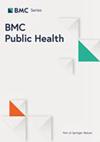Invitation strategy of vaginal HPV self-sampling to improve participation in cervical cancer screening: a systematic review and meta-analysis of randomized trials
IF 3.5
2区 医学
Q1 PUBLIC, ENVIRONMENTAL & OCCUPATIONAL HEALTH
引用次数: 0
Abstract
Human papillomavirus (HPV) self-sampling is recognized as a feasible option for enhancing screening for cervical cancer, particularly among hard-to-reach women. The magnitude of the effectiveness of screening participation under different invitation strategies was reported. This review seeks to compare the effectiveness of invitation strategies in increasing screening participation of HPV self-sampling across diverse study settings. A systematic literature search was conducted in Embase, MEDLINE, and PubMed in April 2023. Articles were included if (1) their target participants were aged between 25 and 70 years; (2) participants in the intervention arm were randomized to receive HPV self-sampling devices through various invitation strategies; (3) participants in the control arm who either received invitations for cervical cancer screening other than HPV self-sampling or opportunistic screening as usual care; (4) studies that provided sufficient data on screening participation in HPV self-sampling as outcome measured. The study design of the included articles was limited to randomized controlled trials. A total of 15 articles were included in this review. Invitation strategies of disseminating HPV self-sampling devices included opt-out and opt-in. Meta-analysis revealed screening participation in the self-sampling group was significantly greater than control arm (OR 3.43, 95% CI 1.59–7.38), irrespective of the invitation strategy employed. Among invitation strategies, opt-out appeared to be more effective on increasing screening participation, compared to control and opt-in strategy (opt-out vs. control OR 3.91, 95% CI 1.82–8.42; opt-in vs. control OR 1.34, 95% CI 0.28–6.39). Opt-out strategy is more successful at improving screening participation compared to opt-in and routine invitation to cervical screening. It is therefore a promising way to improve participation in cervical cancer screening. The findings of this review provide important inputs to optimize strategies for inviting women to participate in vaginal HPV self-sampling across the study setting, thus improving participation in cervical cancer screening.提高宫颈癌筛查参与率的阴道 HPV 自我采样邀请策略:随机试验的系统回顾和荟萃分析
人类乳头瘤病毒(HPV)自我采样被认为是加强宫颈癌筛查的可行方案,尤其是在难以接触到的妇女中。有报道称,不同邀请策略对筛查参与的有效性大小不同。本综述旨在比较不同研究环境下邀请策略对提高 HPV 自采样筛查参与率的有效性。2023 年 4 月,我们在 Embase、MEDLINE 和 PubMed 上进行了系统性文献检索。纳入的文章必须符合以下条件:(1)目标参与者的年龄在 25 岁至 70 岁之间;(2)干预组的参与者通过各种邀请策略随机接受 HPV 自我采样设备;(3)对照组的参与者接受 HPV 自我采样以外的宫颈癌筛查邀请或作为常规护理的机会性筛查;(4)提供足够的 HPV 自我采样筛查参与度数据作为结果测量的研究。纳入文章的研究设计仅限于随机对照试验。本综述共纳入 15 篇文章。HPV自我采样设备的邀请策略包括选择退出和选择加入。元分析表明,无论采用哪种邀请策略,自采样组的筛查参与率都明显高于对照组(OR 3.43,95% CI 1.59-7.38)。在各种邀请策略中,与对照组和选择加入组相比,选择退出似乎更能有效提高筛查参与率(选择退出与对照组相比,OR 3.91,95% CI 1.82-8.42;选择加入与对照组相比,OR 1.34,95% CI 0.28-6.39)。与 "选择接受 "和常规宫颈筛查邀请相比,"选择不接受 "策略在提高筛查参与率方面更为成功。因此,这是提高宫颈癌筛查参与率的一种可行方法。本综述的研究结果为优化邀请妇女参加阴道 HPV 自我采样的策略提供了重要依据,从而提高了宫颈癌筛查的参与率。
本文章由计算机程序翻译,如有差异,请以英文原文为准。
求助全文
约1分钟内获得全文
求助全文
来源期刊

BMC Public Health
医学-公共卫生、环境卫生与职业卫生
CiteScore
6.50
自引率
4.40%
发文量
2108
审稿时长
1 months
期刊介绍:
BMC Public Health is an open access, peer-reviewed journal that considers articles on the epidemiology of disease and the understanding of all aspects of public health. The journal has a special focus on the social determinants of health, the environmental, behavioral, and occupational correlates of health and disease, and the impact of health policies, practices and interventions on the community.
 求助内容:
求助内容: 应助结果提醒方式:
应助结果提醒方式:


